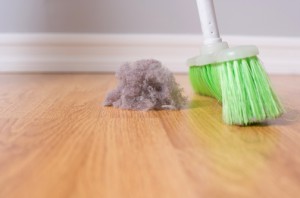 Below are the recommendations for people allergic to dust, dust mites, pets, molds and other house hold allergens. Have treatments to address your allergy symptoms at Advanced Allergy Solutions and you won’t need to do most of these.
Below are the recommendations for people allergic to dust, dust mites, pets, molds and other house hold allergens. Have treatments to address your allergy symptoms at Advanced Allergy Solutions and you won’t need to do most of these.
Living room
Carpets, heavy drapes, curtains, Venetian blinds, upholstery and pillows can all harbor dust, dust mites and pet dander. These should all be dusted and vacuumed regularly.
Using a vacuum with a HEPA (High-Efficiency Particulate Air) filter is recommended. Wash fabrics in hot (130 degrees F) water, and if you are very sensitive and can handle the expense, replace carpet with bare floors, upholstery with non-permeable covers such as leather, and curtains and drapes with washable fabrics or easy-to-clean blinds.
Note: New carpets can temporarily raise the level of chemicals called volatile organic compounds, or VOCs, which might be respiratory irritants.
High humidity
Dust mites love humid environments and mold thrives in it. Use air conditioning in hot weather to keep humidity at 40 percent or lower. Avoid vaporizers or humidifiers, which raise humidity, but consider a dehumidifier if you live in a humid climate.
Books, magazines
Store books and magazines in boxes instead of letting them sit in stacks or on shelves where they catch dust.
Houseplants
Plants help clean the air of carbon dioxide, which gives indoor air that “stale” quality, but soil can harbor mold and pollen can be an irritant. Dried and artificial flowers and straw baskets also hold dust and are best avoided by those who are very sensitive.
Bedroom
Dust mites are most often found in bedding, but can be limited by washing your sheets and blankets every 10 days in hot water. It also helps to vacuum mattresses and box springs (a HEPA filter is preferred). You can also buy dust mite-proof covers for mattresses, pillows and box springs.
Pillows
Look for alternatives to down, feathers, foam rubber or Kapok, if any of these are problematic.
Pets
It may be hard to banish a pet from the bedroom, but because of pet dander and urine traces, “the most important room of the house to keep your pet out of is the bedroom,” according to the ACAAI. Bathing pets frequently and washing hands after contact can reduce allergen contact
Kitchen
Dirty dishes, food left unrefrigerated or in unsealed containers can harbor mold and attract cockroaches, whose feces can cause allergic reactions. Also, it is a good idea to empty and disinfect wastebaskets and recycling bins frequently to prevent mold. Don’t neglect disinfecting the inside of the refrigerator with a 5 percent bleach solution or other allergy-effective cleaner. It’s important to get rid of the dust hidden underneath, behind and on the coils.
Unseen spaces
Set traps along walls for cockroaches or rodents. Look for leaks and/or damp areas around the sink or refrigerator. Wipe up wet spots as soon as possible and fix leaky plumbing. If there is any visible mold, you can clean it with a 5 percent bleach solution.
Bathroom
Mold and mildew grow in moist and/or dark places like shower walls and bathroom fixtures. It is good to disinfect frequently. The blades on your bathroom fan can harbor dust and mold and should be cleaned often or disinfected if mold appears. Run the fan or open a window after showering to lessen high humidity that fosters mold growth.
Playroom
Toys and stuffed animals. Store them in sealed containers to keep them from catching dust. Wash stuffed animals frequently in hot water. Keep them off affected children’s beds.
Chalk
Dust can cause respiratory irritation.
Garage
Car exhaust can trigger a reaction. If a car runs in an attached garage, its pollutants can permeate the house, even with the garage door open. Store lawn, garden, automotive and other chemicals away from the garage or basement if chemical sensitivities are present.
Firewood
Firewood can harbor mold or insects. Store it away from the garage or house.
Smoke
Smokers need to go away from an attached garage to prevent irritants from entering the house.
Basement
Look for wet spots or dampness in the basement where mold can grow. Run a dehumidifier. Check for visible mold and clean and disinfect the affected areas. Consider investing in a HEPA or allergy-trapping filter (with a minimum efficiency rating value of 8 or higher) for your furnace and air conditioning. Replace or clean any filter as directed.
Air ducts
Air ducts can trap dust and harbor mold. Consider having them professionally cleaned. The National Air Duct Cleaners Association does not recommend a specific frequency of cleanings but says pets, smoking, water damage, environmental dust, a large number of residents, or the presence of someone with allergy, asthma, lung disease or a low immune system are factors that warrant more frequent cleaning. “I would say most normal housing would benefit every three years,” says Buck Shepard, NADCA president. He says ducts should be inspected annually as well.
